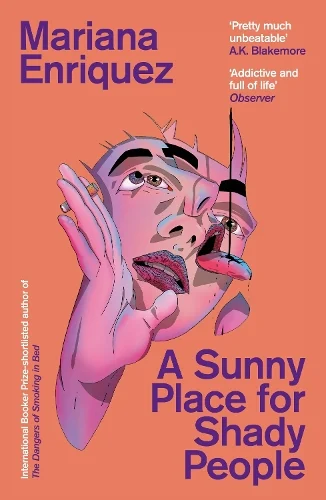December 27th, 2025
This Year I’ve Mostly Been…2025
It’s been a busy year work wise and life wise. Lot’s of commissions with both old and new clients, we also squeezed in a relocation to beautiful Derbyshire…I was definitely ready for a sit down this Christmas! This month I decided to run down, in no particular order, my favourite books, movies/TV and albums from the last 12 months, some you may want to check out as well. There’s some affiliate links but mostly just links directing you to some awesome entertainment.
This year I’ve loved reading…

‘The Satsuma Complex’ Bob Mortimer
'Songs of Spiritual Experience’ Thupten Jinpa & Jas Elsner
'Approaching Enlightenment: A Guidebook for Buddhist Ritual’ Bodhidasa
'The Sense of an Ending’ Julian Barnes
'Significant Wow’ Emily Cotterill
'The Day of the Triffids’ John Wyndham
'A Sunny Place for Shady People’ Mariana Enriquez
I especially loved 'Significant Wow’, even if you don’t think you like poetry, you should give it a try.
This year I’ve loved watching…

'Ladies and Gentlemen: 50 Years of SNL Music’ (Now TV Entertainment)
'Dune: Prophecy’ (Now TV Entertainment)
'Somebody, Somewhere’ S3 (Now TV Entertainment)
'Foundation’ Season 3 (Apple TV+)
'Stranger Things’ Season 5 (Netflix)
This year I’ve loved listening to…

'Quilted Lament’ Claire Rousey/Gretchen Korsmo
'Refugees of the Symbolic Network’ Cerpintxt
‘A Danger to Ourselves’ by Lucrecia Dalt
'A Little Death’ Claire Rousey
'Swimming in the Early Hours’ Emergence Collective
Special mention to Billie Marten who we also saw live twice this year. The track 'Leap Year’ is my absolute favourite track of the year and it was wonderful to hear it played live.
The whole of my albums of the year playlist can be heard here…AOTY 2025
And also the albums I’ve been listening to during December are here…This Month I’ve Mostly Been Listening to (December 2025)
The keen eyed among you will have noticed a move away from Spotify to Tidal, this is for two reasons. Tidal pays artists more for streams and also their CEO isn’t putting their massive profits into funding AI weaponry. There’s clearly been too much war and destruction across the earth in 2025 and I don’t want to contribute to it.
Here’s to a peaceful 2026, may you be well and happy.
Dean




























































































